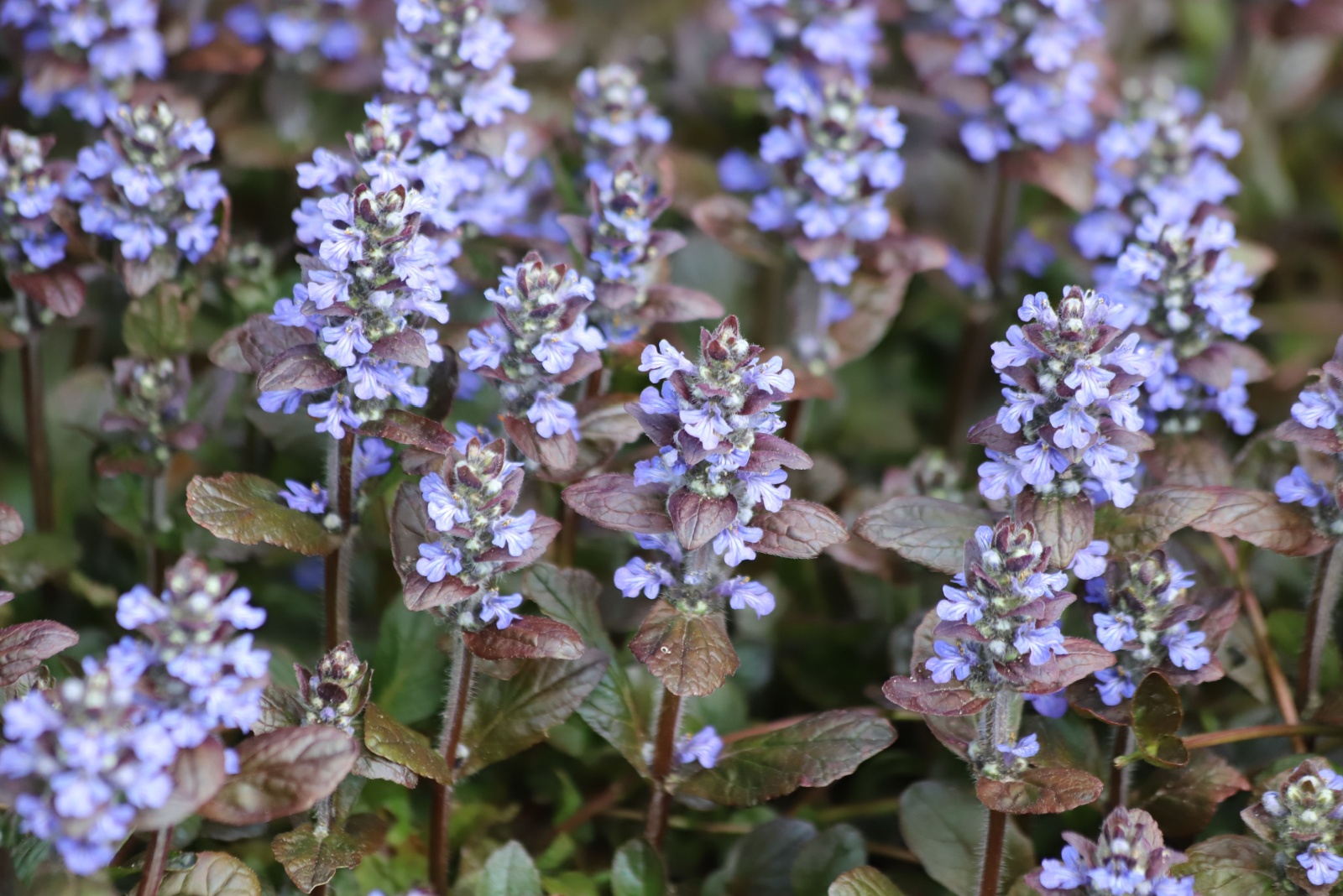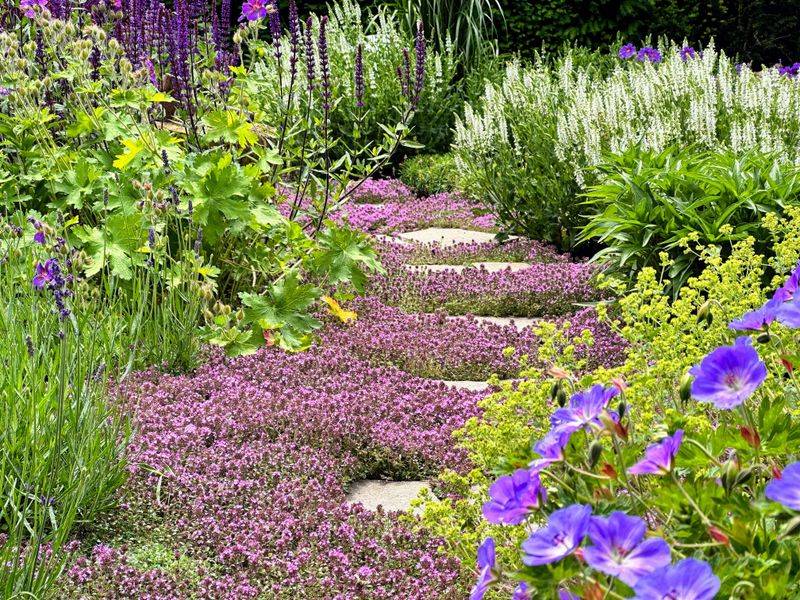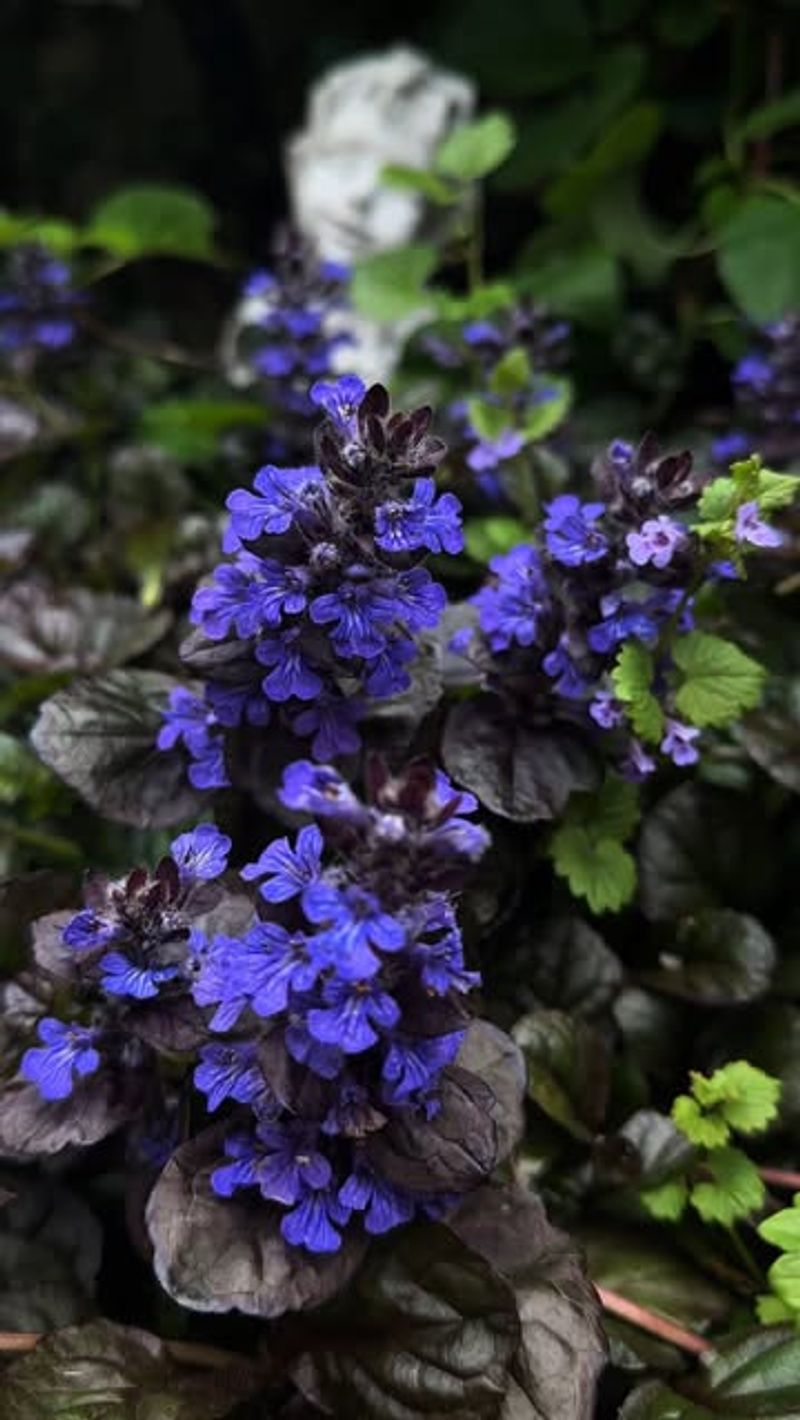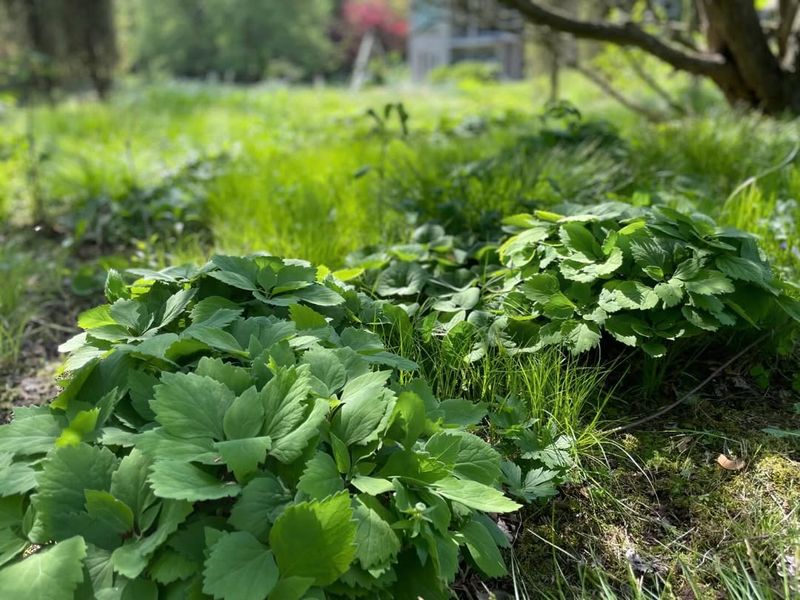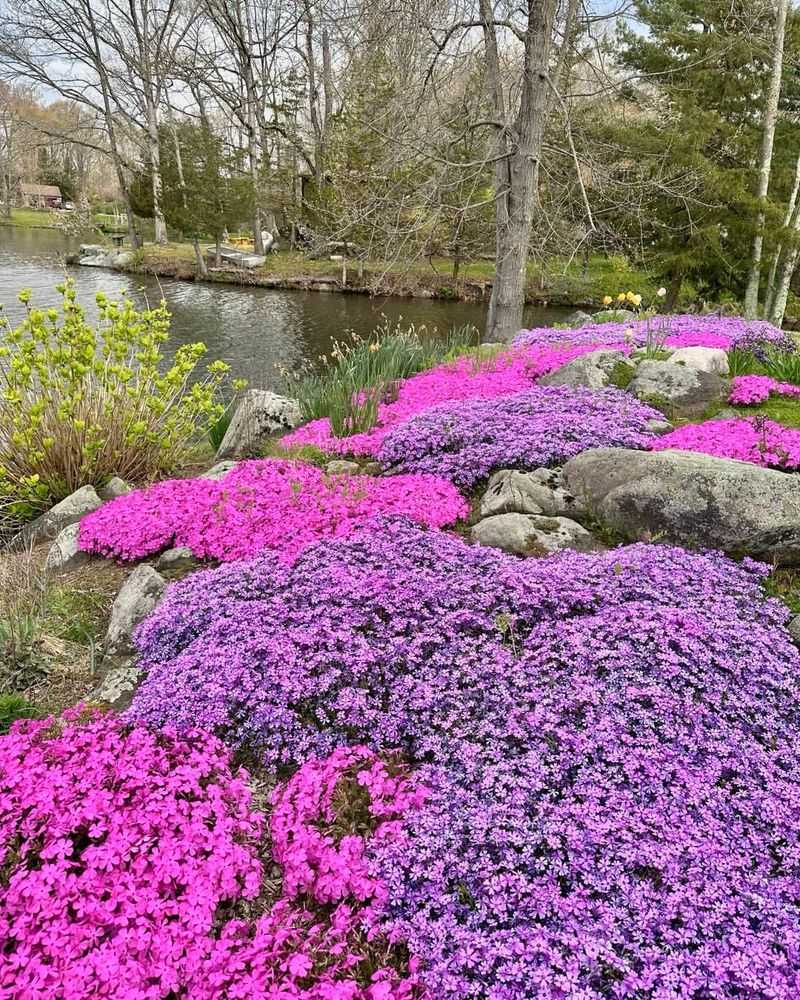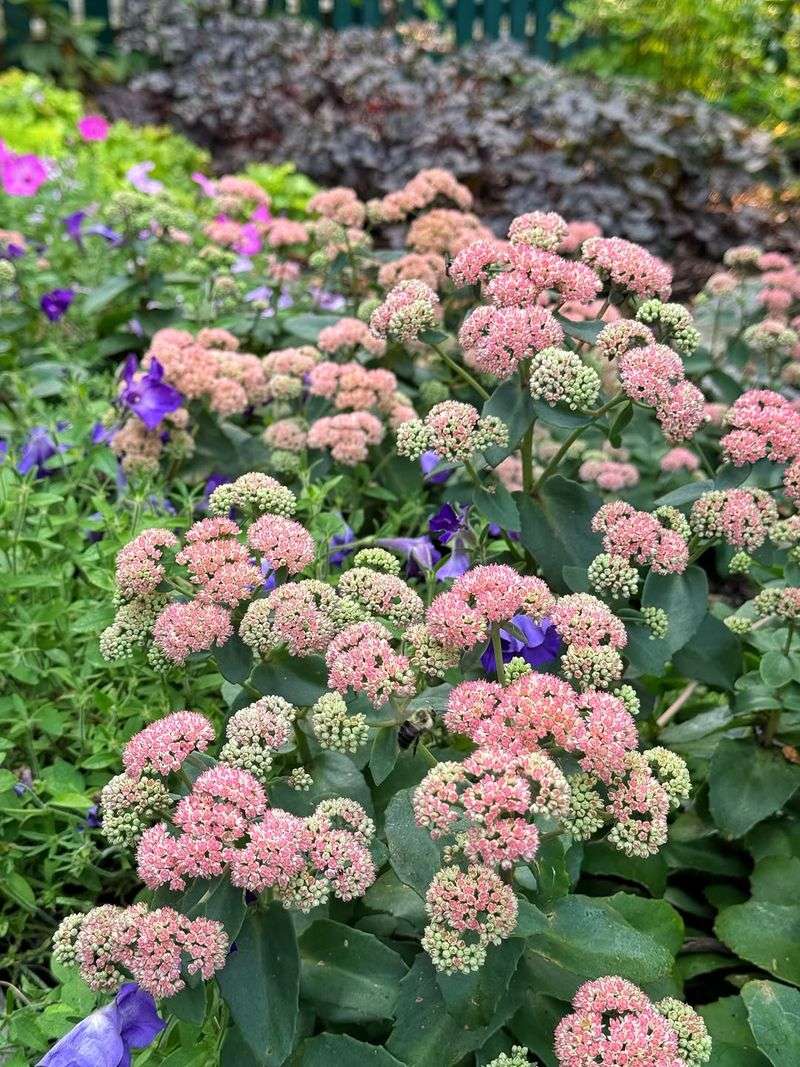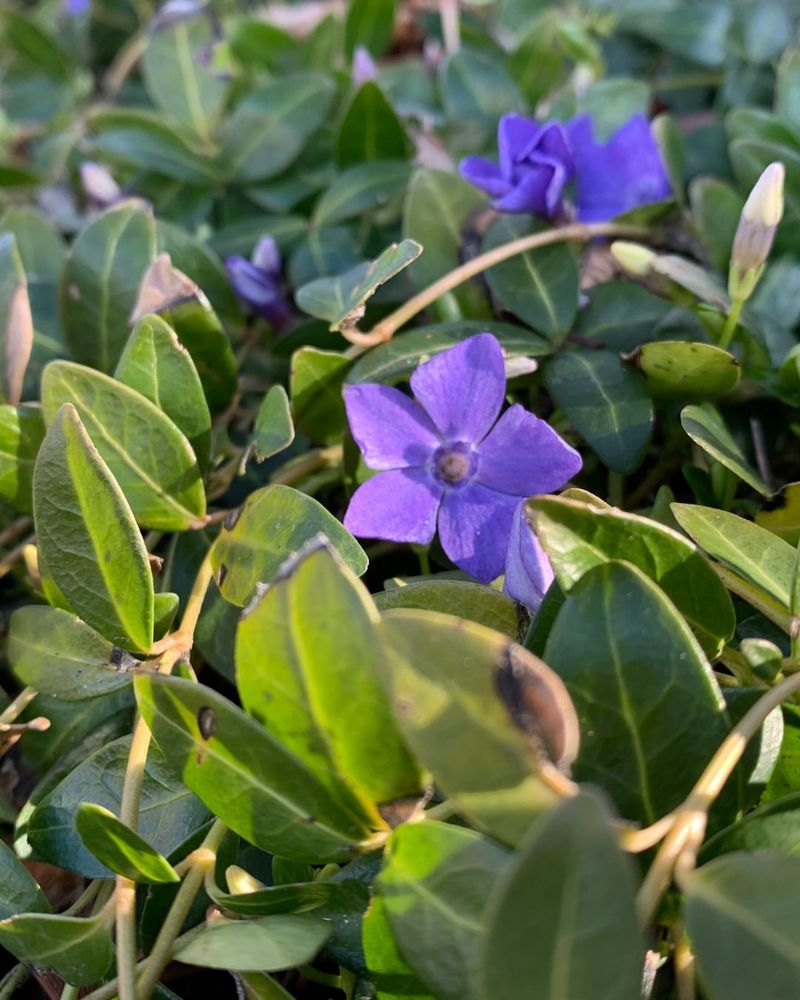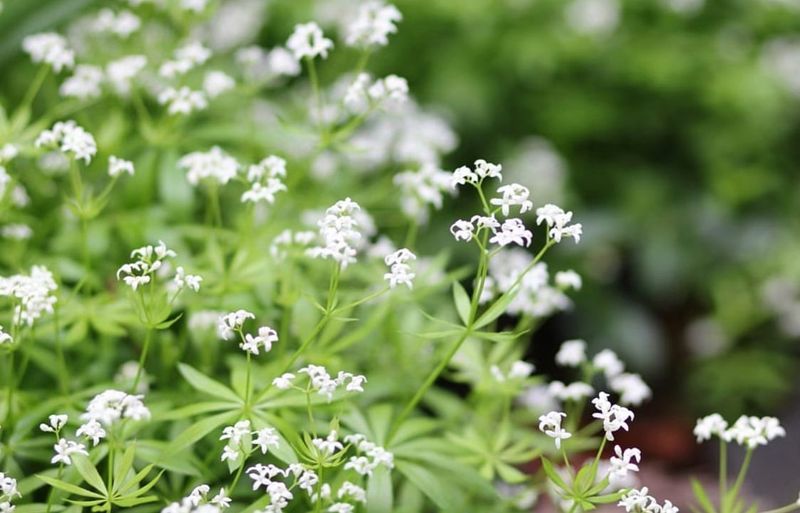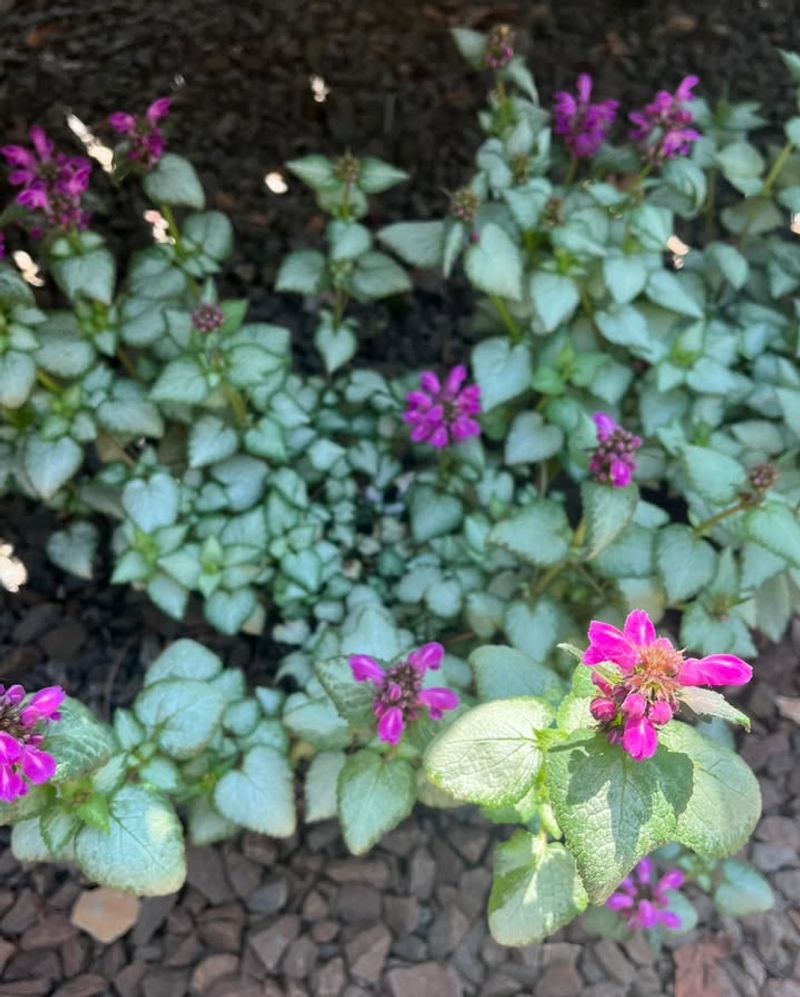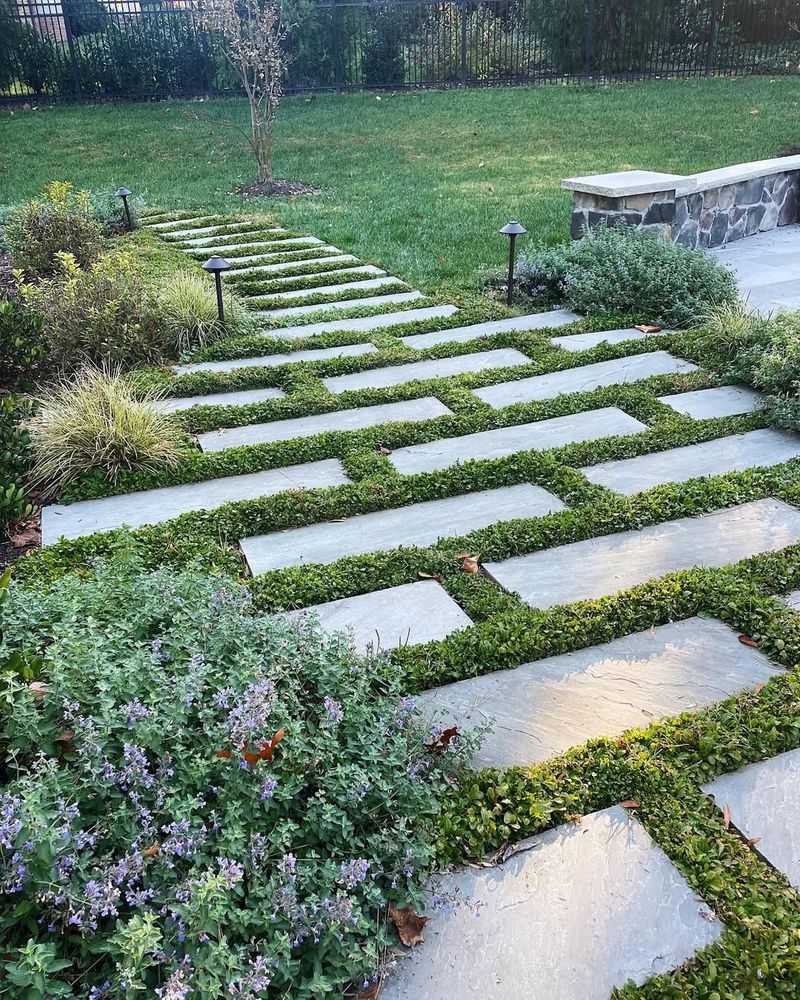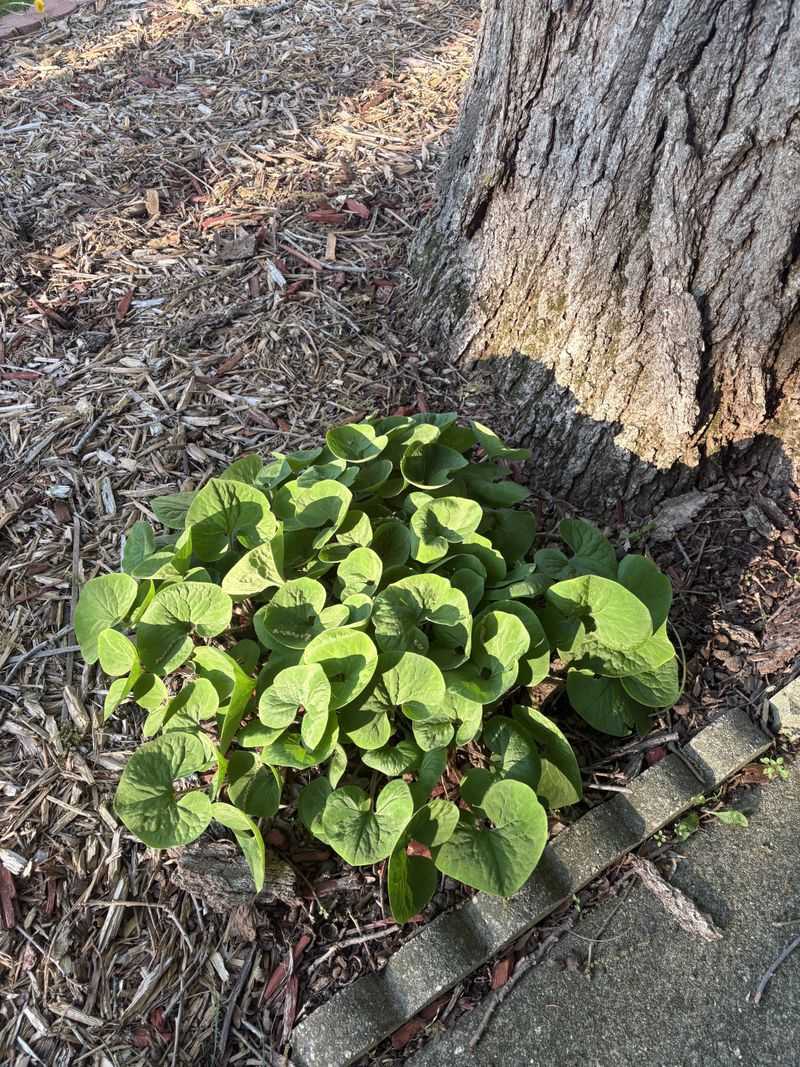Bare patches in your garden can be frustrating, especially when weeds take over or soil erodes away. Ground covers offer a smart solution by spreading quickly to fill empty spaces while adding beauty and protecting the soil.
Missouri gardeners need plants that can handle hot summers, cold winters, and everything in between.
1. Creeping Thyme
Walking across a carpet of creeping thyme releases a wonderful herbal scent that makes your garden smell like a Mediterranean hillside. This tough little plant spreads fast, forming a thick mat that chokes out weeds naturally.
Butterflies and bees love the tiny purple or pink flowers that bloom in late spring. Creeping thyme tolerates foot traffic better than grass, making it perfect for pathways between stepping stones.
It thrives in Missouri’s full sun and handles drought once established, needing minimal water or care.
2. Ajuga (Bugleweed)
Got a shady spot where grass refuses to grow? Ajuga rushes in to save the day with its glossy, colorful leaves that range from deep purple to bronze-green.
Blue or purple flower spikes shoot up in spring, creating a stunning display that lasts for weeks. This vigorous spreader fills bare spots quickly, sometimes too quickly, so plant it where you want full coverage.
Ajuga stays evergreen through Missouri winters, providing year-round color and texture. Deer usually leave it alone, which is a bonus for rural gardeners.
3. Pachysandra
Dense, glossy leaves make pachysandra look like a green carpet rolled out beneath your shade trees. Once planted, this evergreen spreader requires almost no maintenance, making it ideal for busy gardeners.
Small white flowers appear in spring, though most people grow it for the lush foliage. Pachysandra spreads through underground runners, gradually filling in bare patches under trees where grass struggles.
It prefers shade and moist soil, handling Missouri’s humid summers without complaint. Just avoid planting it in full sun where leaves may scorch.
4. Creeping Phlox
Picture a waterfall of pink, purple, white, or red flowers spilling down a hillside each spring. Creeping phlox delivers that spectacular show while solving erosion problems on slopes and banks.
The needle-like evergreen foliage stays attractive year-round, even when flowers fade. This sun-lover spreads quickly but stays well-behaved, not invading other garden areas aggressively.
Rock gardens and retaining walls become stunning focal points when creeping phlox takes hold. Missouri’s variable weather doesn’t faze this hardy native plant.
5. Sedum (Stonecrop)
Succulent leaves store water like tiny reservoirs, helping sedum survive Missouri’s occasional dry spells without extra watering. Dozens of varieties exist, from golden groundhuggers to burgundy creepers.
Star-shaped flowers in yellow, pink, or white attract pollinators during summer months. Sedum spreads steadily across rocky or poor soil where other plants give up.
It’s practically indestructible once established, thriving in full sun and heat. Even beginners succeed with this forgiving plant that asks for almost nothing.
6. Vinca Minor (Periwinkle)
Shiny evergreen leaves and cheerful blue-purple flowers make periwinkle a classic choice for Missouri shade gardens. Long trailing stems root wherever they touch soil, creating dense coverage that blocks weeds effectively.
Spring flowers add pops of color beneath trees and shrubs where little else blooms. Periwinkle handles dry shade better than most ground covers, though it appreciates occasional watering.
Once established, it forms a maintenance-free carpet that returns year after year. Just monitor its spread, as it can be aggressive in ideal conditions.
7. Sweet Woodruff
Delicate white flowers shaped like tiny stars float above whorled leaves each spring, creating an enchanting woodland scene. Sweet woodruff releases a pleasant vanilla-like fragrance when leaves are crushed or dried.
This European native has naturalized beautifully in Missouri’s shaded areas, spreading reliably without becoming a nuisance. It prefers moist, rich soil under trees where grass struggles to compete.
The bright green foliage stays attractive through summer, going dormant in winter. Sweet woodruff makes an excellent companion for spring bulbs and hostas.
8. Lamium (Dead Nettle)
Silver-splashed leaves brighten shady corners even when flowers aren’t blooming. Lamium offers both foliage interest and colorful pink, white, or purple hooded flowers from spring through fall.
Despite the unfortunate common name, it doesn’t sting and spreads quickly to fill bare spots. This low-maintenance charmer tolerates dry shade, deer browsing, and Missouri’s temperature swings.
It stays semi-evergreen in mild winters, providing color when most plants have disappeared. Lamium works wonderfully along woodland paths or beneath shrub borders.
9. Mazus
Tiny purple-blue flowers with yellow throats create a miniature wildflower meadow right at ground level. Mazus stays low, rarely reaching more than two inches tall, making it perfect between pavers and stepping stones.
It tolerates light foot traffic and spreads quickly through stolons to fill gaps. This little charmer blooms repeatedly from late spring through summer, attracting small pollinators.
Mazus prefers moist soil and partial shade but adapts to various Missouri conditions. Its delicate appearance hides a surprisingly tough constitution.
10. Wild Ginger
Heart-shaped leaves create a lush, tropical look in Missouri shade gardens, though this plant is completely winter-hardy. Wild ginger is a true native that supports local ecosystems while solving bare-spot problems.
Hidden burgundy flowers bloom near the ground in spring, pollinated by crawling insects. The foliage smells spicy when crushed, though it’s not related to culinary ginger.
It spreads slowly but steadily through rhizomes, forming dense colonies that suppress weeds. Wild ginger thrives in moist, rich woodland soil with plenty of organic matter.

